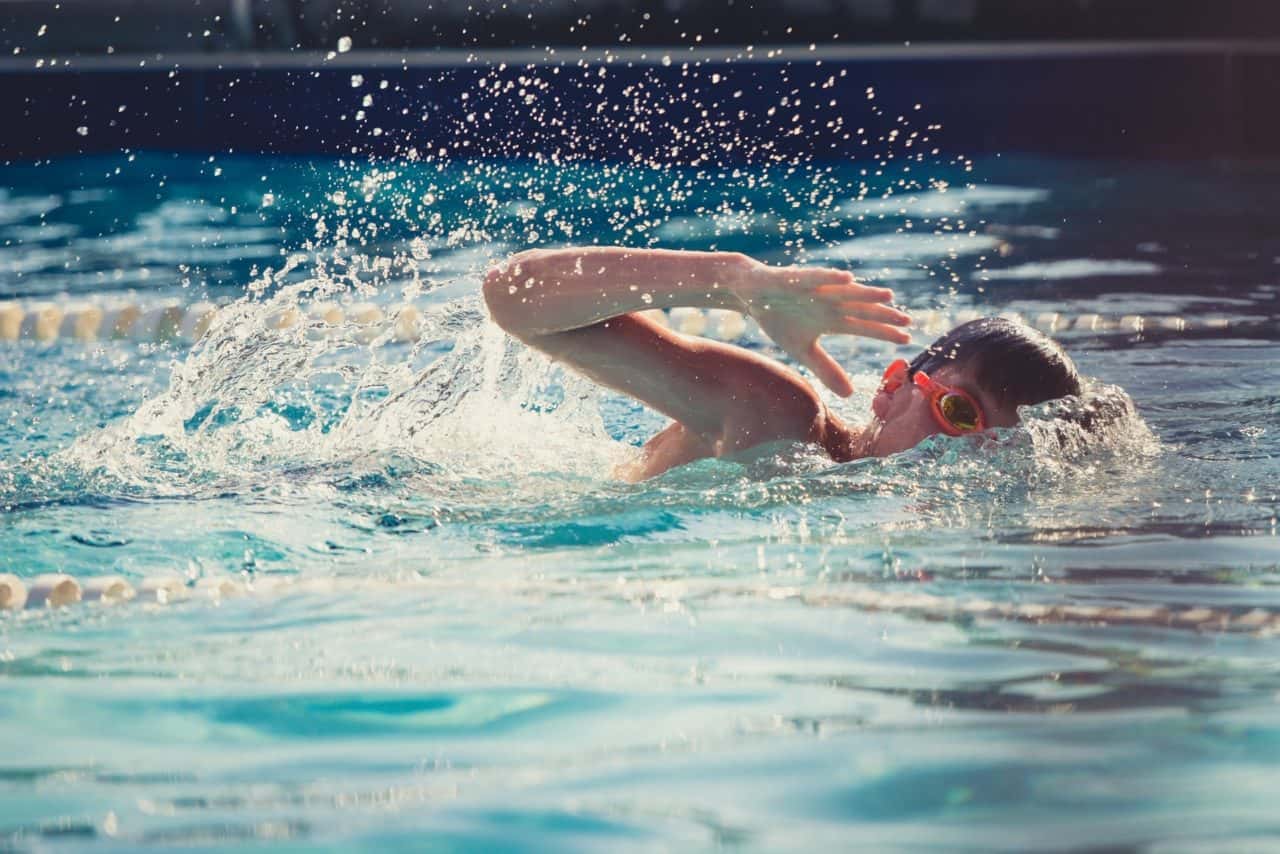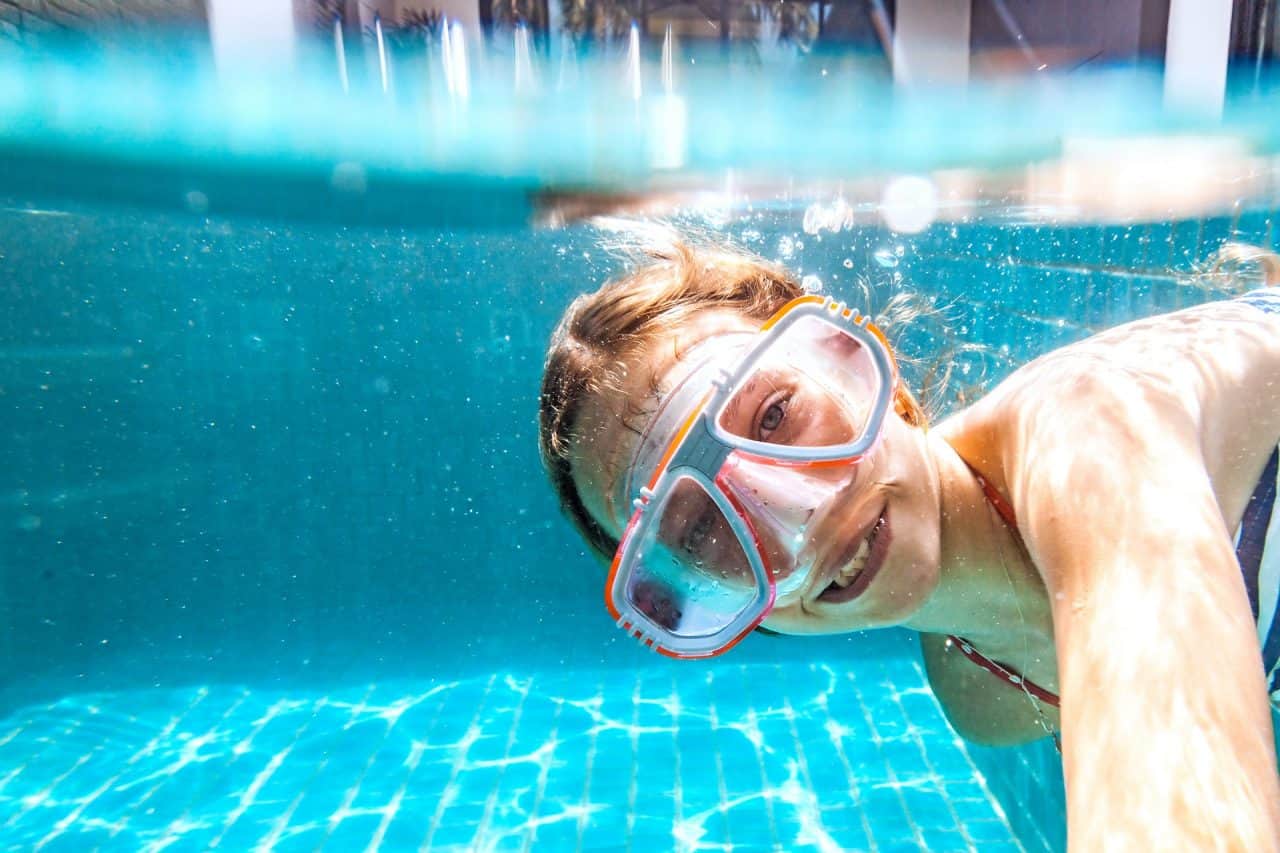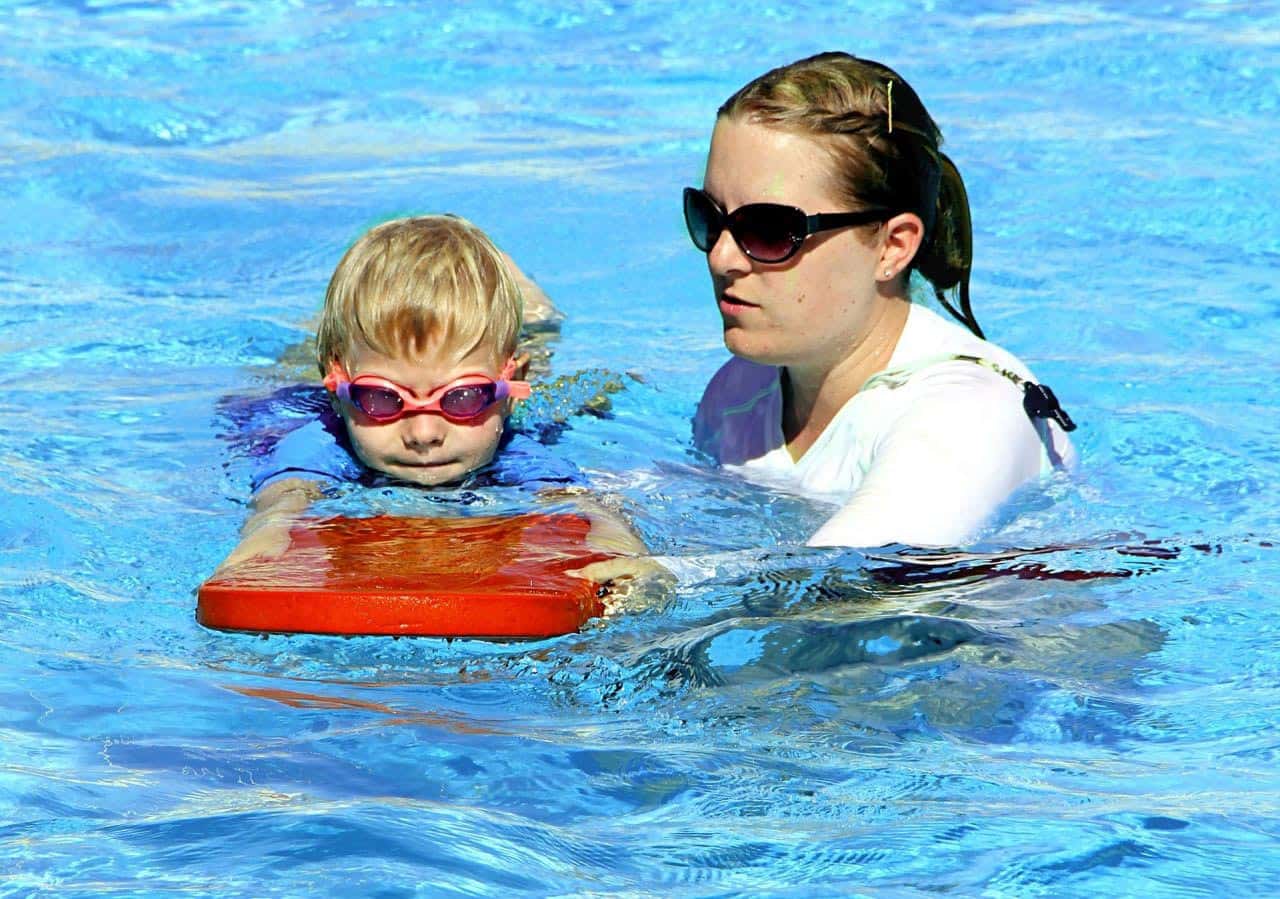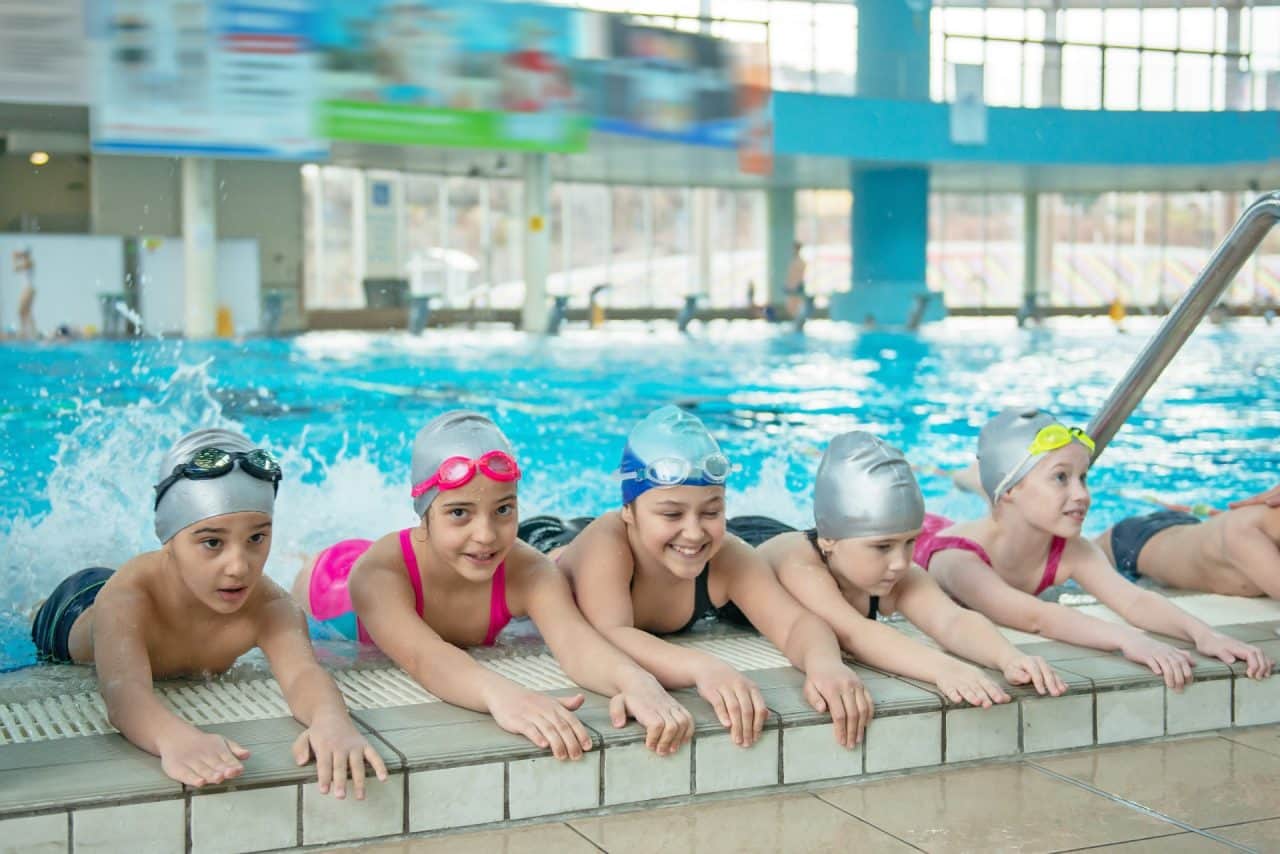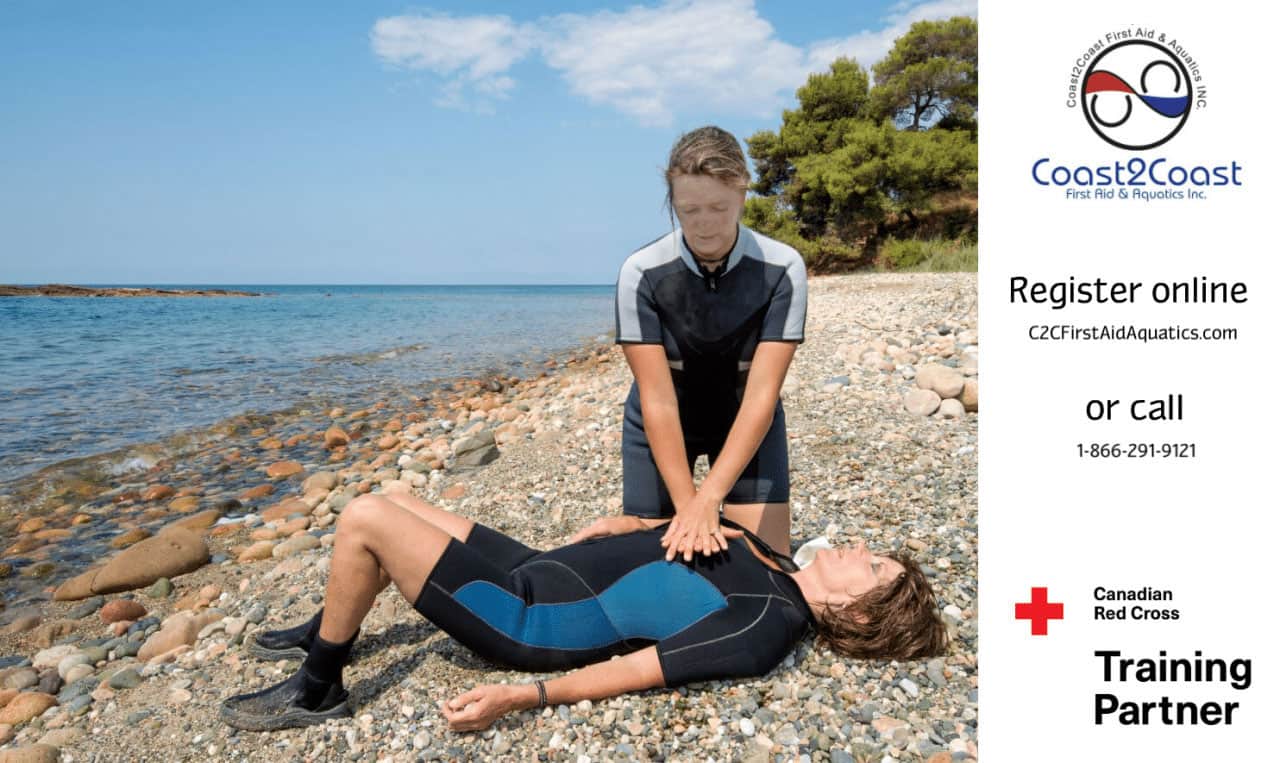Did you know that swimming benefits more than just your physical health? That’s right! Many people assume that swimming is only something you can do for exercise, but it has plenty of other great benefits as well.
Continue readingLearn Swimming: Step-by-Step Guide
How To Learn To Swim?
Summer is quickly approaching which means it’s almost time to go swimming! Many of us look forward to these summer months so we can spend more time outdoors enjoying the weather with our family and friends. This summer, us at Coast2Coast want to make sure you’re prepared to have a safe summer. In today’s blog post, we will be discussing:
- Can you learn how to swim by yourself?
- What are the steps to learn how to swim?
- How do I get over my fear of swimming?
Register for Mobile Swimming Lessons
How to learn to swim by yourself?
One of the most asked questions in swimming is: can you learn how to swim by yourself? Although it is possible to learn by yourself, we do recommend that you learn how to swim with a trained instructor for safety purposes. If you have no prior swim knowledge, you will increase your risk of drowning.
Options to learn swimming
-
Take a course with a trained instructor
The safest and highly recommended way to learn how to swim is by signing up for swimming lessons with a swim school and have an instructor teach you the proper skills. Swimming instructors will not only teach you different swim strokes, but also teach you lifesaving skills such as treading water. To learn faster, you can ask your instructor for homework to practice more on your own time in a safe environment.
If you want to learn how to swim with an instructor, Coast2Coast offers swimming lessons for all ages. We offer public swimming lessons, mobile swimming lessons and integrated swimming lessons.
-
Practice with a friend or family member
Another way to learn how to swim is with a friend or family member who is a strong swimmer and knows the techniques and strokes. In case of an emergency, you will likely be able to get help from them. Although this is a safer option than swimming by yourself, we still strongly recommend to attend a swimming school with certified lifeguards and instructors always on deck. Coast2Coast offers swimming classes with professionals always on scene who are experienced and trained at the highest levels of aquatics and drowning prevention. Remember to practice in the shallow end of the pool at all times.
-
Practice on your own
The least safe way to learn how to swim would be to practice on your own. If you are taking this risk, it is recommended to practice in the shallow end of a pool with an innertube or another floatation device on hand. Reading or watching videos on how to swim would be a way to prepare yourself before entering the pool. Please be aware that this is not a recommended option, though.
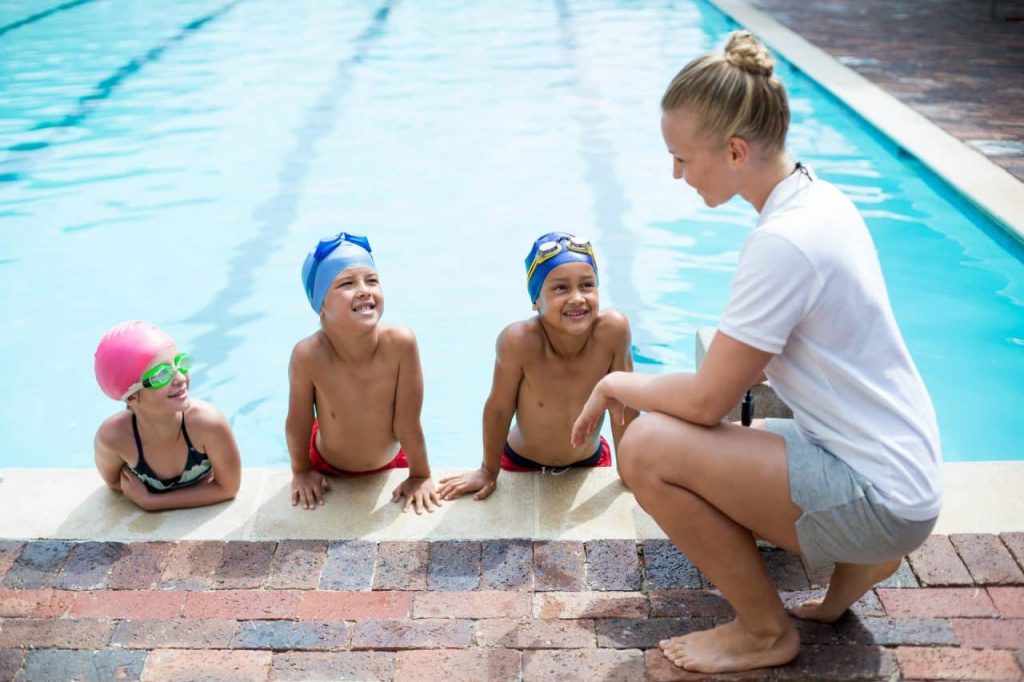
Swimming Lessons for All Ages!
What are the steps to learn how to swim?
Knowing how to swim is a great skill to have. Keep in mind that everyone learns at different levels, so these steps may not work for you. If you are fearful of water, scroll down to read how to get over your fear of swimming.
1) Become comfortable with the water
Begin practicing in the shallow end of a pool with your swimming instructor. You want to be sure you can stand up comfortably if you lose your balance or need to take a break.
2) Practice floating
Keep in mind, our body is naturally a pretty buoyant as we fill our lungs with air. All our bodies are different, though. You can practice floating, first, by holding onto the edge of a pool and lifting your legs off the ground. Practice both on your stomach and on your back while holding onto the edge of the pool. Once you feel comfortable floating while holding onto the edge, you can practice floating in the shallow end of a pool alone or with the assistance of your swimming instructor or another person.
If you ever panic while swimming in deep water, resort to floating on your back and try to relax. Give yourself time to calm down before beginning swimming again.
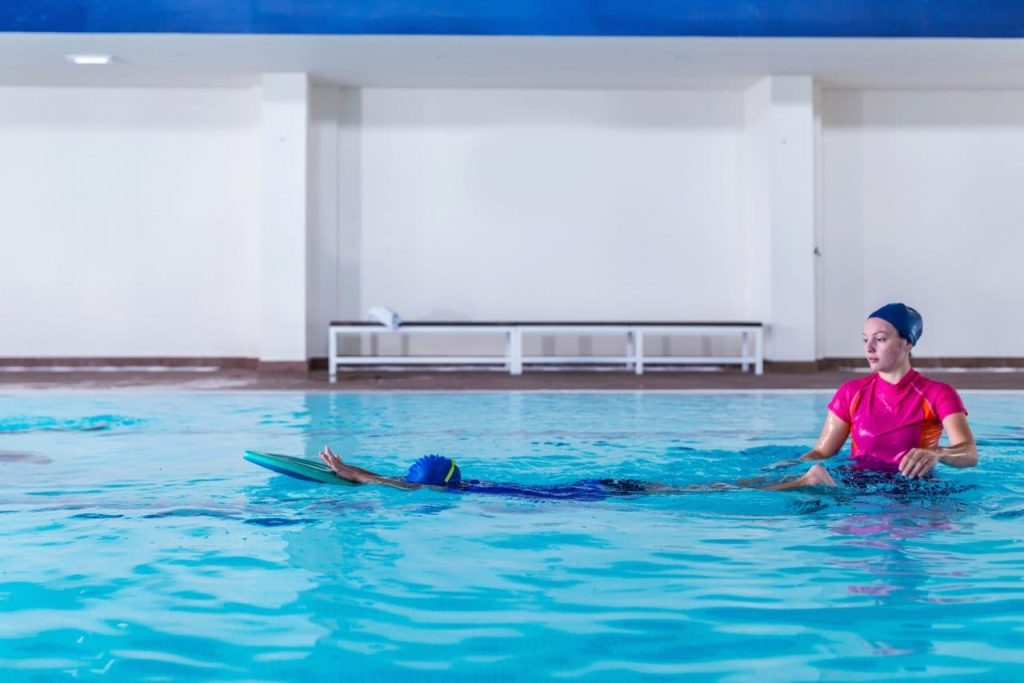
3) Practice blowing bubbles underwater
In the shallow end of the pool, take a deep breath before submerging your face underwater. Exhale fully with your nose. Small bubbles will form. You can also practice by exhaling through your mouth.
If you’re uncomfortable blowing bubbles through your nose, you can wear a nose plug or hold your nose closed with one hand and exhale through your mouth.
It also may be helpful to wear goggles while going underwater. Make sure the goggles fit properly or else water may enter them.
4) Practice kicking
The safest way to practice kicking is by holding onto the edge of a pool like in the picture below. The most typical kick to practice is a flutter kick. You will keep your legs fairly straight while alternating which leg is kicking. This is a great, and safe, way to practice kicking techniques while staying afloat.
Once you feel comfortable kicking while holding onto the edge of a pool, you can try practicing while floating on your back in shallow water.
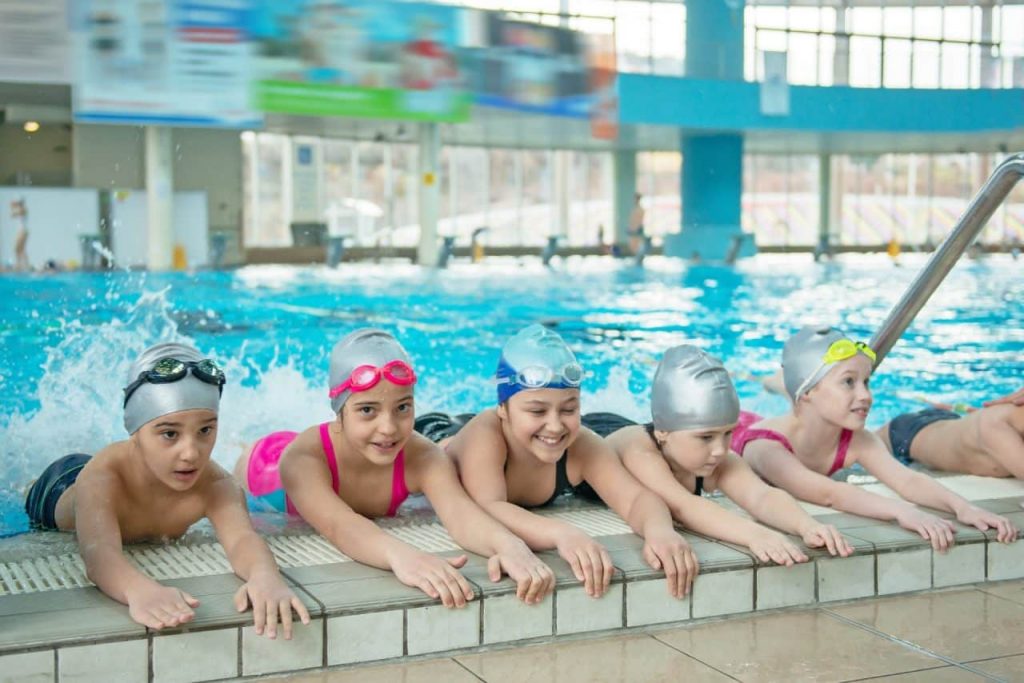
5) Practice arm strokes
Once you feel comfortable kicking your feet, you can begin practicing arm stroke techniques. To begin, start with backstroke. Not only is it one of the easier strokes to learn, but it will also keep your face above water. To perform a backstroke, start by floating on your back. You will then lift one arm straight out of the water, palm forward, fingers together. While keeping that arm straight, bring it back towards the side of your head, then underwater. Continue moving your arm in a circular motion along the side of your body and repeat. You will do this with both arms, alternating them.
You will also need to add in kicking with your legs. Flutter each of your legs with a slight bend in both knees. Keep your toes pointed.
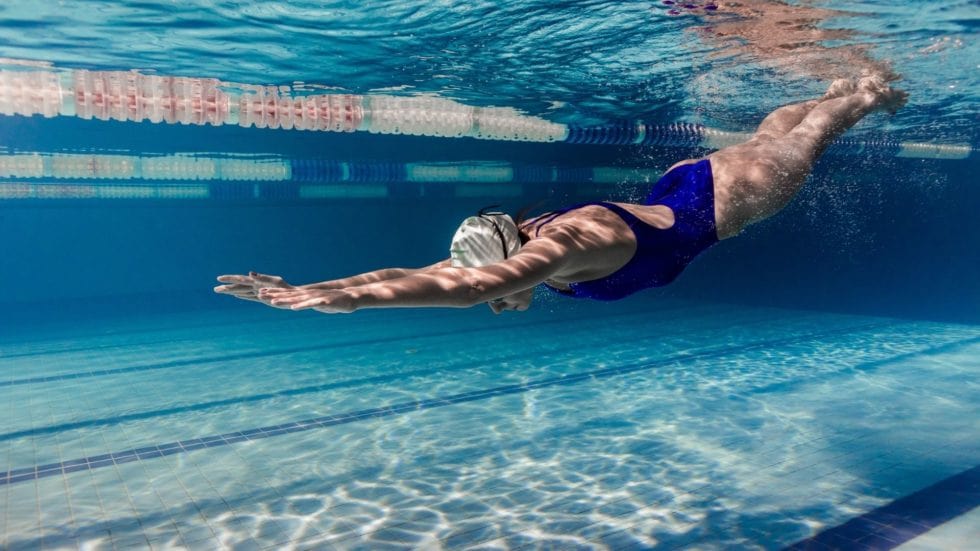
WARNING: While learning to swim alone, use a pool with a lifeguard. It is never recommended to swim alone unless you are a strong swimmer.
Practice Swimming Skills With a Certified Instructor
How do I get over my fear of swimming?
Many people are afraid of water and swimming simply because they were never taught how to swim. Others may be afraid because of a previous traumatic experience (e.g. almost drowning). How do you get over this fear and enjoy the water?
Take it slow and build confidence:
-
Mentally prepare yourself: Accept that you’ll be entering a pool and begin learning to swim. Fear is psychological and can be overcome. A swim instructor can be a great resource to help you face this fear.
Gradual acclimation to the water
-
Get comfortable around water: Start by simply sitting on the edge of the pool with your legs in the water. This will help you build water confidence at your own pace.
-
Gradually submerge your body: Slowly submerge more of your body into the water, eventually reaching chest-deep water.
Desensitize yourself to water on your face:
-
Splash your face: Once comfortable in chest-deep water, try splashing your face. You don’t need to go completely underwater unless you’re ready. This will help you get used to water touching your face.
Practice basic skills with support:
-
Go underwater (optional): When comfortable, take a deep breath and try going under the water for a few seconds each time. Wearing goggles and plugging your nose can help. Once underwater, blow bubbles out your mouth or nose.
-
Hold onto the pool edge and practice floating and kicking: This is a great way to get comfortable with these fundamental swimming techniques.
Invest in proper instruction:
-
Use flotation devices: If your child is nervous about the water, a pool noodle, swim board, or other flotation devices can offer a sense of security. These tools let your child get comfortable in the water while giving them extra support. They can be great for practicing kicking and basic arm strokes in a safe and enjoyable way, especially during those first swimming lessons.
-
Take swimming lessons: The best option is to learn how to swim with a trained instructor. Not only will they teach you proper swimming skills, like freestyle swimming and breathing exercises for swimming, but they will also help you face your fear and keep you safe during water safety training. Inquire about swimming classes to begin your journey towards enjoying the water! Remember, consistent practice swimming is key to improving your skills and building confidence.
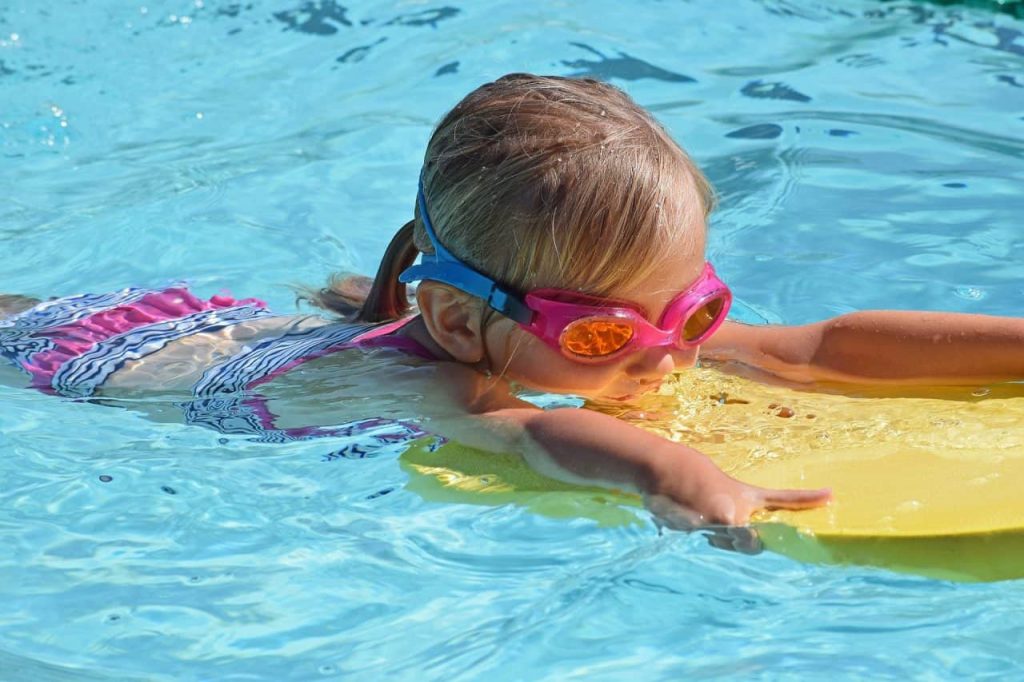
Important Safety Tips for Swimming with Children
Learning to swim is fun, but safety should always come first! Here are some important tips to keep in mind when children are in the water:
-
Adult Supervision: Never let children swim alone. Constant adult supervision is essential to ensure a safe enjoyable experience and make them feel confident.
-
Shallow End: Beginner swimmers should stay in the shallow end where they can stand up and never go near the deep end. This builds confidence and reduces risks. Being near the shallow end allows the children to regain their footing in water if ever they lose their balance.
-
Life Jackets: Experts suggest that life jackets and flotation devices should be worn by everyone, not just young children and inexperienced swimmers. These provide extra support and buoyancy for those still mastering their swimming skills.
-
Buddy Up: Encourage children to swim with a buddy for extra safety. This system enhances safety and makes swimming fun. Ensure that the companion is always within the reach of the child and both of them are aware of each other’s location at all times.
-
Breathing Techniques: Breathing techniques are as important as floating techniques. Start teaching children basic breathing techniques early on. Even simple practice like blowing bubbles helps familiarize them with breath control in the water. Constantly practicing these basic techniques could help them familiarize with the process and prepare them for more advanced skills later on.
Learning how to swim may seem like a daunting task to some, but it’s a great skill to have. You need to take time to practice your swimming skill in order to get better. Once you’re comfortable with your swimming abilities, you’ll be able to enjoy the pool, beach, lake and more with your friends and family safely. Enjoy the process, you’ll be swimming laps like a fish.
Invest In Yourself


What is the Coast2Coast Mobile Swim School?
Coast2Coast Swim School teaches everyone of all abilities, from beginners to advanced! We offer a unique and diverse program that allows many to swim who otherwise might not have the opportunity to do so.
Our Mobile School brings our certified and highly experienced Canadian Red Cross instructors to your door! Our instructors are trained to teach anyone and everyone of all abilities, as we have an evaluation lesson first so we can get to know the comfort level of the swimmer, as well as their ability, and their swimming goals.
For young swimmers, we offer the Canadian Red Cross Swim Kids program, as well as our Coast2Coast Swim School program. Both programs work closely together with you as a parent, relative or caregiver, and together with our instructors, we make sure your child receives the most rewarding swim training in the Greater Toronto Area!For adults who want mobile lessons, we offer a similar program with combining Canadian Red Cross programming geared towards teens and adults.
Our mobile swimming instruction starts your residence, whether it be a condominium pool, a backyard pool, or a community pool that is close to your location. We bring the fun to you!
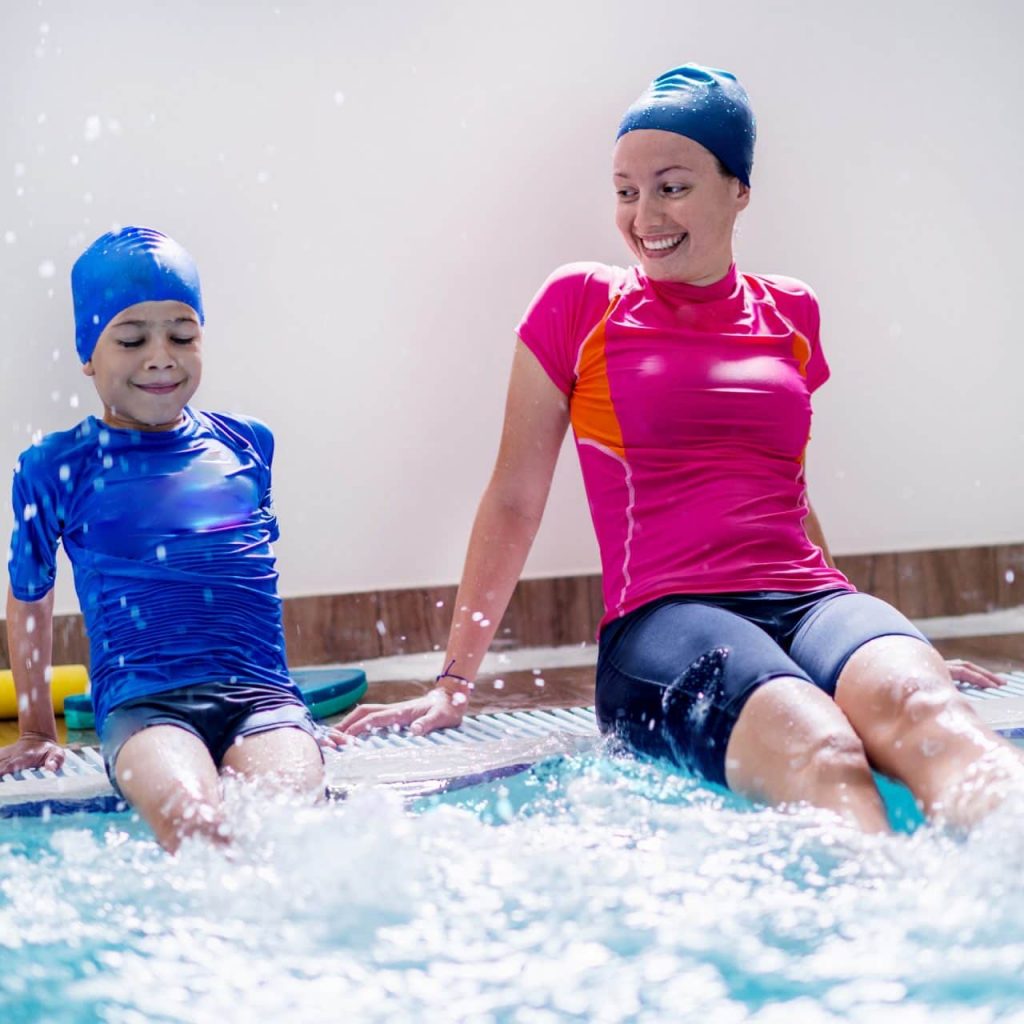
Dive into Personalized Swimming Lessons!
Enhance your skills with private swimming sessions tailored just for you! Our experienced instructors provide one-on-one guidance to help you build confidence and improve your technique in the water.
Why Mobile Swimming?
Our program is based on research which concludes that many are hesitant to enroll in swimming lessons for themselves, or for their children, as it includes transportation issues (dealing with public transit, far away swimming centres, long commutes in traffic), and many are uncomfortable swimming in unknown settings.
Our Mobile program can be rid all of issues by bringing our instructors to you. No longer will you have to worry about the inconvenience of taking your children to and from lessons, or for yourself, having to use transportation to get to and from a pool not in your area.
Our program strives to make anyone an active and forgoing swimmer! The combination of the Red Cross and Coast2Coast program trains all of our students regardless of age and ability to be the best in technique and efficiency. With our evaluation lesson, the instructor bonds with the pupil and understands the needs of the swimmer, what is to be expected from the mobile course, and what goals are to be obtained from our program. We make sure everyone is in their correct level to begin their road to expertise swimming!
The Red Cross Swim Program and Coast2Coast Swim School teaches all five strokes (front crawl, back crawl, breaststroke, elementary backstroke, and sidestroke), promotes fitness and endurance, and gives swimmers lifelong skills to safely enjoy other swimming and water activities.
We not only encourage our swimmers to be proactive in the water, but in all aspects of their physical well-being. Swimming is an an essential skill builder that contributes well over to any physical activity. From being a rock-climber, to a hockey player, to surfing the waves on vacation, one’s strength and personal athletic skills climb with the expertise of one on one swimming training.
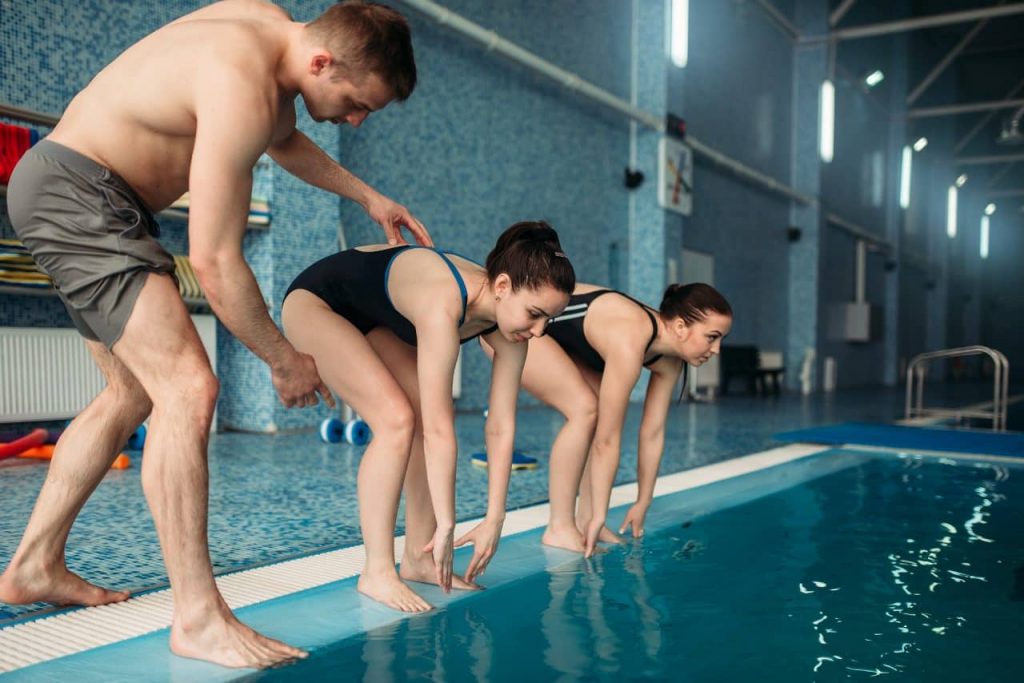
Why Coast2Coast?
The Red Cross is one of the most recognized brands in the world. Your parents, caregivers, friends, and co-workers have probably all learned to swim under the Red Cross banner. You may already understand our programs, and what value they hold for you and your own children.The Coast2Coast Swim School program is based on a foundation of having highly experienced Canadian Red Cross trained instructors matched with enthusiastic swimmers who challenge each other to go beyond their goals they have desired.
Many of us living in the Greater Toronto Area (GTA) have the luxury of having access to a pool, whether it been in our backyard in the suburbs, or our condominium pools that don’t require us to leave the building (hint** for winter enrollment). Yet, many of us who have access to these pools do not properly use them, simply because we are afraid to try something new and maybe look ‘foolish’, or for our children’s sake, we are scared for their safety that something may happen if they choose to swim.
At Coast2Coast, our number one priority is training swimmers to their best ability to prevent drowning and water-related accidents. Our Mobile Swim Instructors are immensely prepared in situations where drowning or accidents may occur, and are constantly supervising their pupils throughout their lessons.
Along with swimming technical training, our training is also water safety and how to handle water situations such as lakes, oceans, outdoor public pools, ponds, and even over frozen water, where many drowning incidents take place each year. We strongly advise that all children should be supervised while in any water-related facility, even your own backyard pool!
In Canada, 1 in 5 drowning fatalities are age fourteen years and younger, mostly due to having zero to little training, as well as unsupervised play in the water. Coast2Coast is determined to lower that statistic with our distinguished swim lessons. We deeply care about the children of our communities, and want only the best for them to be eminently educated in swimming and water-related injury prevention.

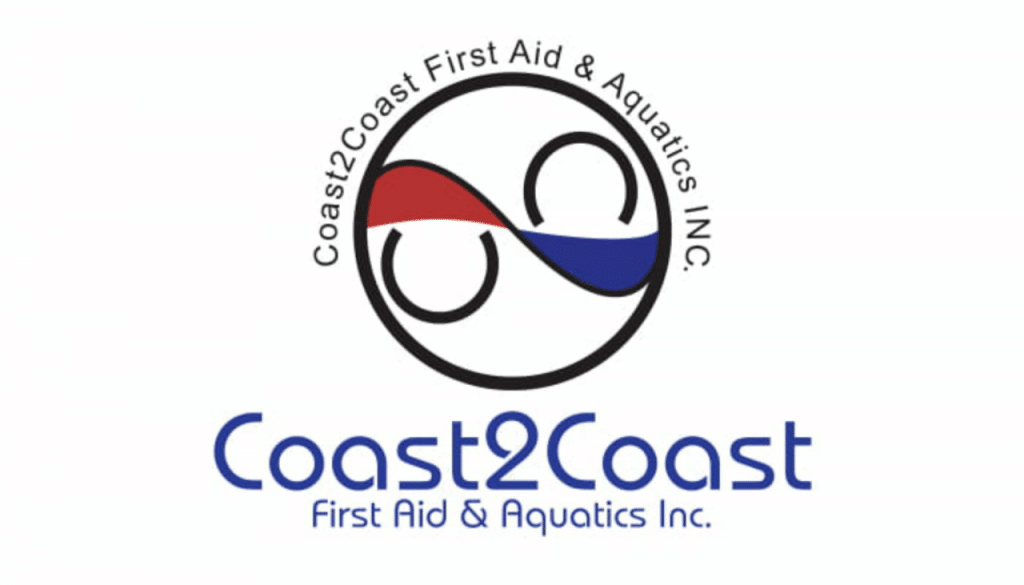
So whether you are an inexperienced adult swimmer, or a parent or guardian wanting to protect your children, Coast2Coast is the option for your swimming desires.
Contact our office by calling 1-866-291-9121, or emailing us at [email protected] to begin the registration process, where we will ask you a series of questions to find you or your children the best instructor for your needs and preferences
Register for First Aid Training
Register today for a First Aid Training course and learn how to deal with emergencies and keep your loved ones safe! Check out our facilities and book your spot now.
Swimming as a Popular and Healthy Summer Sport
Besides the fact that swimming improves balance, coordination, and posture, it is also a flourishing physical activity to enhance cardio, burn calories, and gain muscle! The popularity of the sport is a result of open participation — everyone can learn how to swim! Swimming is a non-impact activity which helps those who have problems in their joints, knees, lower back, and those who are differently abled to improve their health, movement, and their accessibility.
Continue readingThe Importance of First Aid This Summer
If one thing’s sure enough, it’s this: Toronto will be absolutely hot throughout the summer. In response, many folks within the region head for the water on the weekends and holidays. Whether it’s in the form of a backyard or community pool, a beach, getting wet is that the best way to remain cool throughout the scorching summer months. However, along with all of the fun of swimming comes several dangers. In fact, drowning number one cause of accidental death for Torontonians kids aged zero to five years. These serious statistics highlight the importance of being as safe as possible when by the water this summer – and could be a reminder of the advantages of taking swimming lessons, as well.
Continue readingIt Is Never Too Late To Learn How To Swim!
Canada is an aquatic country. Besides two oceans, there are many rivers flowing through Canadian landscape as well as a multitude of lakes. Most of Canada’s bodies of water are OK for swimming, and Canadians indeed do love to swim, boat and raft in them.
Some facts you might have not known
- During the first half of the 20th century, there was little public concern with regard to water safety.
- Since the late 1940s, Red Cross had started to offer swimming lessons to the population, either as a standalone program or as a part of CPR courses.
- Once it was clear that water safety is an important issue in a country that has a lot of water, Red Cross and other organizations incorporated the aspect of treating water related emergencies in their first aid programs separately.
- A good example of such a program is our Toronto CPR training. If you google through relevant internet sites, you’ll find that CPR courses in Toronto area dedicate a whole section to treating emergencies involving water.
So why water safety is so important?
- First, it is important to realize, that not everybody knows how to swim, and among those that do know how to swim, there are even fewer that had participated in CPR courses and know how to deal with a water related emergency.
- Another thing that must be said is that it is better to start late than not at all. There are swimming programs available for all ages and levels of proficiency.
- Even if you don’t want to learn how to swim, it may be useful to know how to treat someone who’s drowning and has his or her lungs filled with water. That can happen to everybody, including your loved ones.
- Emergencies are possible to deal with. For example, by doing as little as enrolling for a CPR training in Toronto, you can become proficient at dealing with a wide variety of emergency scenarios, including water related cases.
We interviewed several people that had completed our training and some of them told us that understanding the importance of water safety caused them to behave more cautiously, not only preparing for, but preventing water related accidents. They also understand how it is important to take a first aid course.
As you can see, understanding the importance of water safety is very important. Enroll now to make sure you are ready for the emergency when it strikes! Learn more by visiting our Coast2Coast website.




